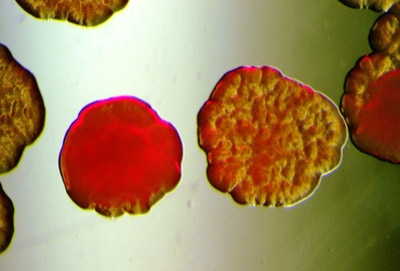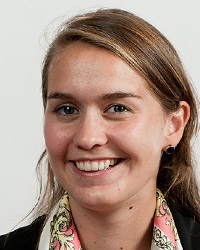
NEXUS1492 study on ancient human microbiomes published in Nature Scientific Reports
An international team of researchers, involving members from the ERC Synergy project NEXUS 1492 based at the Leiden University, the Universities of Oklahoma, Copenhagen and York reveal challenges when studying ancient microbiomes in a recent issue of Scientific Reports.

The paper, entitled Intrinsic challenges in ancient microbiome reconstruction using 16S rRNA gene amplification, refines analytical methods for ancient microbiome research. The study shows that targeted amplification, an approach generally used in research on microbiomes produces highly skewed data when used for ancient DNA. Instead, the researchers suggest shotgun metagenomics as an alternative approach to reconstruct ancient microbiomes.
Microbiome
Besides 10 13 human cells, our body also contains 10 14 bacterial cells, collectively called our microbiome. The microbial communities in our bodies are involved in fundamental biological functions, such as in metabolism and the immune system. Archaeological materials, such as dental calculus, from a variety of contexts provide an opportunity to examine the evolution of the microbiome over time. To date, characterization of the ancient oral microbiome has primarily been accomplished through targeted amplification and sequencing of variable regions in the 16S rRNA gene.
Methanobrevibacter
In this paper, the international team shows that the microbial community profiles reconstructed from targeted sequencing of the 16S rRNA gene V3 region do not conform to biological expectations and show systematic taxonomic biases, such as exceptionally high frequencies of the human-associated archaeon Methanobrevibacter, that cannot be explained by exogenous contamination. To determine the nature and cause of these shifts, they applied shotgun metagenomics and found that the targeted amplification approach results in strong overrepresentation of some DNA fragments over others. This is caused by the variation in length of the DNA: some types of microorganisms have long fragments and other have short ones. In ancient human microbiome samples there is an increasing chance that the DNA will be damaged over time, and longer fragments are more likely to be damaged than shorter ones. As a result, the ratio of the different bacteria can appear to change in older samples of DNA. Those with the longer targets drop out of the analysis first, and the older the sample, the less complex it will look. Thus, community compositions of ancient microbiomes are biased by the age of the samples.

First author Kirsten Ziesemer, from the NEXUS 1492 project, explains:
“During our initial analyses, we observed that ancient microbiome reconstructions showed unexpected shifts in the microbial composition, such as enormous amounts of Euryarchaeota (up to 60%, when 1-2% is normal in the oral cavity). We looked deeper into these biases and found that targeted amplification, while useful for qualitatively assessing sample preservation and contamination, are vulnerable to taphonomic artifacts. As such, this greatly limits the utility of this approach in and our understanding of ancient microbiome reconstructions.”
Corresponding author Dr. Christina Warinner, from the University of Oklahoma, says:"The emerging field of ancient microbiome science is revealing dramatic insights into the fundamental evolutionary relationships between humans, microbes, and chronic disease. A key step in this research is establishing the best methods for accurately reconstructing the state of the ancestral human microbiome using ancient DNA and paleoprotein technologies. Through Next-Generation Sequencing (NGS) analysis of more than a hundred ancient microbiome samples drawn from sites and cultures spanning three continents and more than 4,000 years, this study advances and refines ancient microbiome analytical methods and provides a framework for future ancient microbiome investigations."

Prof. dr. Corinne Hofman, PI of the NEXUS 1492 project, says that this research is a crucial contribution to our multidisciplinary project which aims at unravelling the impacts of European colonization on the indigenous populations of the circum-Caribbean. Now that we have found the best method to analyze ancient microbiomes we can start to look into the transformations in lifeways and deathways across the historical divide.
Further reading:
- Intrinsic challenges in ancient microbiome reconstruction using 16S rRNA gene amplification Kirsten A. Ziesemer, Allison E. Mann, Krithivasan Sankaranarayanan, Hannes Schroeder, Andrew T. Ozga, Bernd W. Brandt, Egija Zaura, Andrea Waters- Rist, Menno Hoogland, Domingo C. Salazar-García, Mark Aldenderfer, Camilla Speller, Jessica Hendy, Darlene A. Weston, Sandy J. MacDonald, Gavin H. Thomas, Matthew J. Collins, Cecil M. Lewis, Corinne Hofman, Christina Warinner. Nature Scientific Reports 2015; DOI: 10.1038/srep16498. Published 13 November 2015.
- Why you should not brush your teeth Kirsten A. Ziesemer
Funding
This work was supported by the European Research Council (FP7 ERC-Synergy Nexus1492 project grant number 319209) and the US National Institutes of Health (R01 GM089886), the BBVA Foundation (I Ayudas a Investigadores, Innovadores y Creadores), the Generalitat Valenciana (VALi+d APOSTD/2014/123 and GV/2015/060), the European Union (EUROTAST FP7 PEOPLE-2010 MC ITN, Braudel-IFER-FMSH; FP7/2007-2013 - MSCA-COFUND, n°245743), and the Centre for Chronic Diseases and Disorders (C2D2) Research Priming Fund grant to CFS. C2D2 is part-funded by the Wellcome Trust (ref: 097829).
